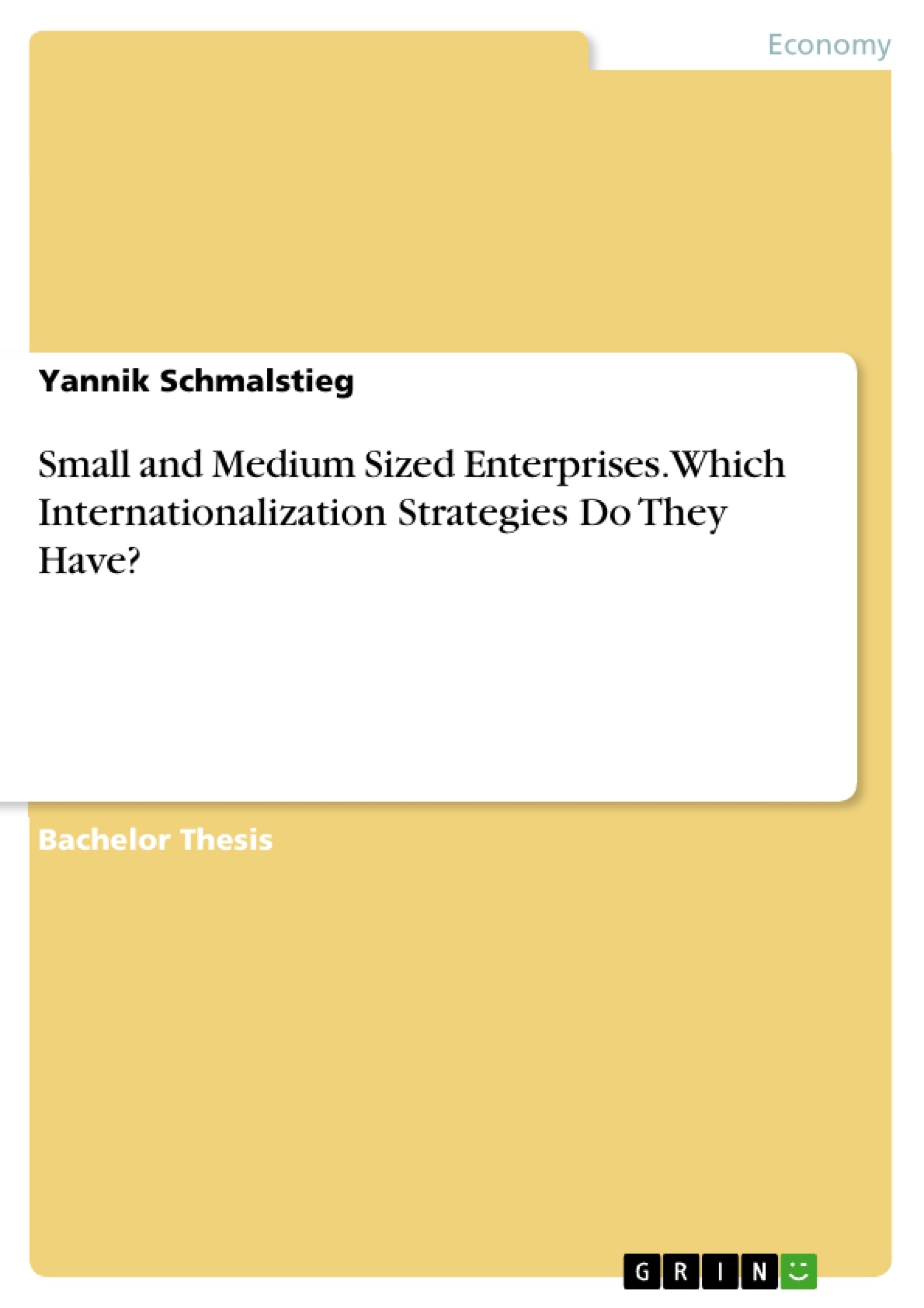Intriguingly, most research on internationalization strategies focuses on large, multinational enterprises. This is unjustifiable given the economic importance of small and medium-sized enterprises (SMEs) or the emergence of small firm types such as “Born Globals”. The goal of this thesis is to undo the neglection of SMEs and provide fresh insights into the topic of SME internationalization from a strategic viewpoint. The thesis complements literature by thoroughly analyzing the relationships between the most important elements of small firm internationalization.
By summarizing the extant literature about internationalization drivers and barriers, entry modes and strategies of SMEs, the understanding and appreciation of prevalent concepts will be fostered. The result, a conceptual interplay framework, provides a sound base for managerial decision-making and effective governmental policies that seek to promote SME internationalization. Furthermore, scholars might find it useful as a fruitful starting point for further research in the respective field. It is derived from the most relevant internationalization models and focuses on the strong interaction between networks, knowledge and the entrepreneur.
Small in size and confronted with resource constraints, it is particularly difficult to cross national borders. This handicap is further fueled by the lack of academic literature which predominantly focuses on internationalization strategies of multinational enterprises (MNEs). It is widely known, however, that SMEs are not just smaller forms of MNEs. It follows that internationalization models for MNEs might not be suitable to describe small firm behavior. Olejnik thus argues that a distinction between process patterns of MNEs and SMEs has to be made. Differences between SMEs and MNEs exist, for example, in terms of resource endowment, knowledge levels or the importance of the owner/manager.
Given the challenges for SMEs it appears that there is no room for small firms in the international environment. And yet, new company breeds like the so called “Born Globals” seem to offset the liabilities of small businesses. At the same time, major changes in information systems, communication systems and transportation have enabled SMEs to pursue international endeavors.
Inhaltsverzeichnis (Table of Contents)
- Introduction
- Key Terms
- Internationalization
- Small and medium-sized enterprises (SMEs)
- Drivers for Internationalization of SMEs – The Rationale for Going Global
- Internal Drivers
- External Drivers
- Barriers to Internationalization of SMEs – Does Size Matter?
- The Liability of Smallness, Newness and Foreignness
- Internal Barriers
- External Barriers
- The Switch of Barrier Perception over Time
- Market Entry Modes of SMEs – The Agony of Choice
- General Overview
- Import
- Export
- Strategic Alliances
- Foreign Direct Investment
- Internationalization Models of SMEs – A Theoretical Overview
- The Internationalization Process Model or Uppsala Model
- International New Ventures or The Born Global Firm
- The Network Model of Internationalization
- A Holistic Approach
- Discussion
- Theoretical Implications
- Managerial Implications
- Limitations and Suggestions for Further Research
Zielsetzung und Themenschwerpunkte (Objectives and Key Themes)
The thesis aims to bridge the gap in academic literature that predominantly focuses on large multinational enterprises, neglecting the significant economic role of small and medium-sized enterprises (SMEs) and the emergence of "Born Globals". By analyzing the relationships between key elements of small firm internationalization, the thesis seeks to provide a fresh perspective on SME internationalization from a strategic viewpoint.
- Internationalization drivers and barriers faced by SMEs
- Market entry modes and strategies employed by SMEs
- Internationalization models and their relevance to SMEs
- The interplay between networks, knowledge, and the entrepreneur in SME internationalization
- The development of a conceptual framework for SME internationalization.
Zusammenfassung der Kapitel (Chapter Summaries)
The introduction outlines the challenges faced by SMEs in pursuing internationalization due to their size and resource constraints, highlighting the lack of academic focus on this area. The chapter discusses the unique characteristics of SMEs and the need for distinct internationalization models compared to those applied to multinational enterprises. The introduction also emphasizes the potential for SMEs to overcome these challenges through their strengths and the evolving business environment.
The chapter on key terms provides definitions of "internationalization" and "small and medium-sized enterprises (SMEs)", establishing a common understanding of these fundamental concepts. It sets the stage for subsequent discussions on drivers, barriers, and models of SME internationalization.
The chapter on drivers for internationalization explores the internal and external factors that motivate SMEs to go global. This includes examining internal drivers such as growth ambitions, product life cycles, and competitive advantage, as well as external drivers such as market opportunities, technological advancements, and government incentives.
The chapter on barriers to internationalization examines the various challenges that SMEs encounter in their pursuit of international expansion. This includes analyzing the liabilities of smallness, newness, and foreignness, internal barriers such as resource constraints and lack of expertise, external barriers such as market access and cultural differences, and the changing perception of barriers over time.
The chapter on market entry modes discusses the various strategies that SMEs can adopt for entering foreign markets. This includes exploring different entry modes such as exporting, importing, strategic alliances, and foreign direct investment, analyzing their advantages and disadvantages, and considering factors such as cost, risk, and control.
The chapter on internationalization models presents a theoretical overview of prominent models that explain SME internationalization processes. This includes examining the Internationalization Process Model (Uppsala Model), the International New Ventures (Born Global Firm) model, the Network Model of Internationalization, and a holistic approach that integrates multiple perspectives. The chapter analyzes the strengths and weaknesses of each model and their applicability to SME internationalization.
Schlüsselwörter (Keywords)
The primary focus of this thesis lies on internationalization strategies of small and medium-sized enterprises (SMEs). The work delves into the drivers and barriers to internationalization, exploring various market entry modes and comparing existing internationalization models for SMEs. Key terms include "internationalization", "SMEs", "Born Globals", "drivers", "barriers", "market entry modes", "strategic alliances", "foreign direct investment", "network model", "knowledge", and "entrepreneur".
- Citation du texte
- Yannik Schmalstieg (Auteur), 2017, Small and Medium Sized Enterprises. Which Internationalization Strategies Do They Have?, Munich, GRIN Verlag, https://www.grin.com/document/477602



